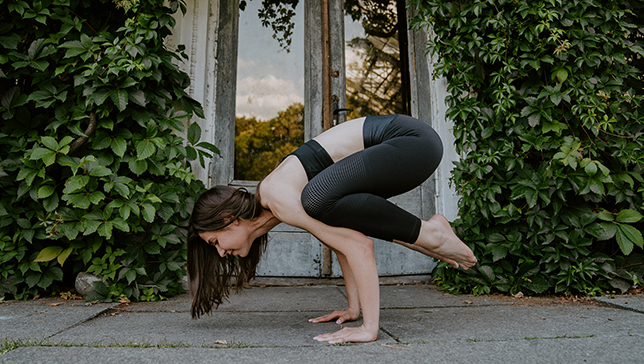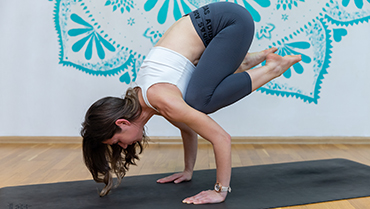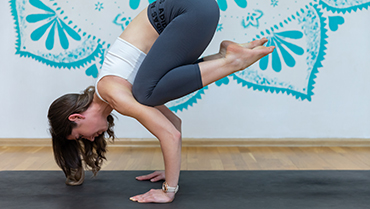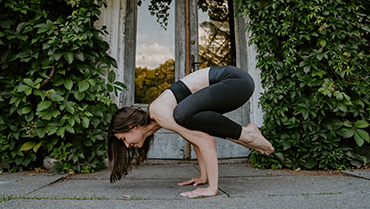Crow Pose - Kakasana

Contents
Crow Pose, known as Kakasana, and Crane Pose, known as Bakasana, are both versions of the same balancing position. Crow Pose is the easier of the two poses, where you balance closer to your hands. Crane Pose is a more extended version. It’s good to practice and get the hang of Crow Pose first and then to move on to the trickier Crane Pose. For both of these poses, it’s important to practice balance first and to build core strength with poses like Plank Pose and Boat Pose.
Pose Detail
- By Type: Arm Balance Yoga Poses, Balancing Yoga Poses, Strengthening Yoga Poses
- Difficulty: Beginners, Intermediate
Step-by-Step Instructions
Benefits and Contraindications
Strengthens the wrists, arms, shoulders, inner thighs and core muscles.
Mobilizes the upper back and hips.
Mobilizes the upper back and hips.
Avoid this pose if you have any wrists (like carpal tunnel syndrome) or shoulder injuries.
You might want to avoid this pose if you feel discomfort and suffer from sciatica, spondylitis or other back/disc problems as the spine is slightly rounded.
Photo poses in different angles



Modifications, Props & Tips
- If you feel this pose in your wrists you can, to reduce pressure, roll up a mat and place the palm of the hands on the mat and the fingers on the floor.
- If elbows fall out to the sides you can tighten a strap around your arms just over your elbows (shoulder distance apart) to keep them in place.
- Place a pillow under your head to gain confidence shifting your weight forward.
Frequently Asked Questions
Variations
- Side Crow Pose
- Flying Crow Pose